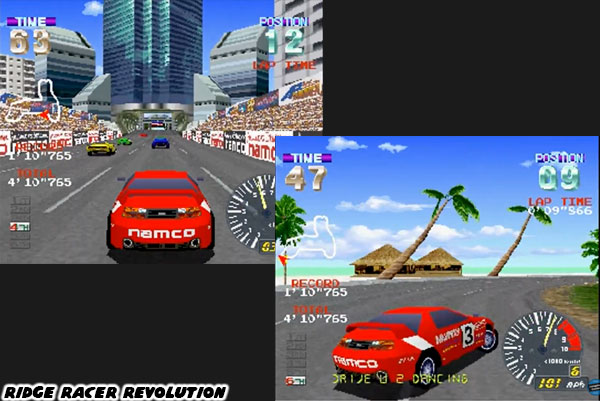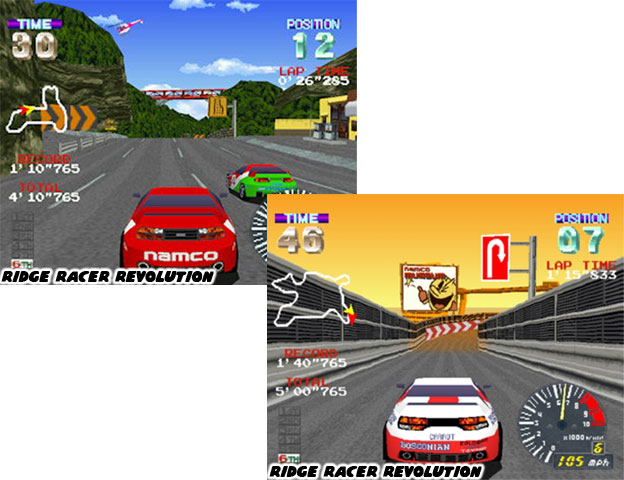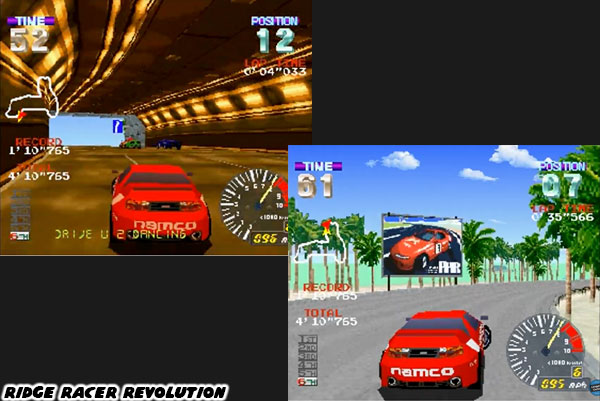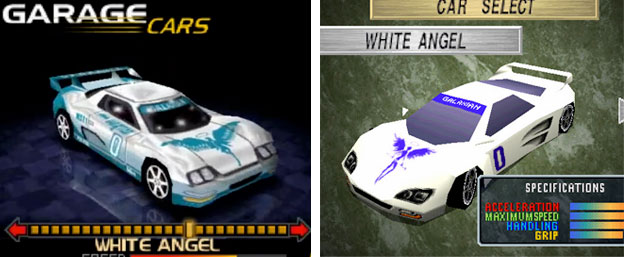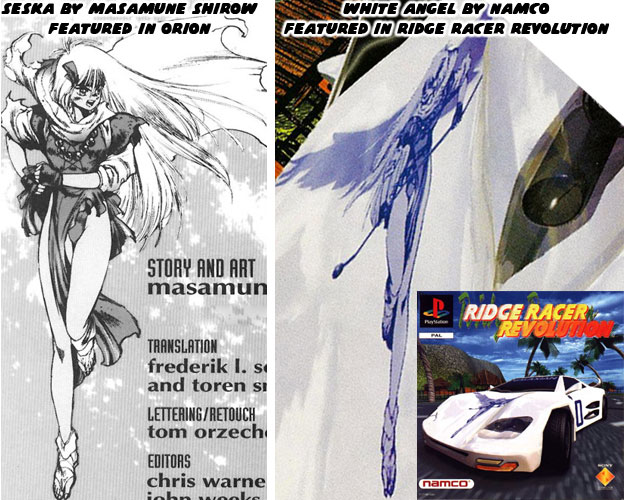The Angel 0 and Devil 13 had become iconic cars in the Ridge Racer universe. Each version of the series following Ridge Racer Revolution had a new Angel and Devil to battle against and unlock. The designs of each car were culled from the most exotic race cars and sports cars ever produced such as the Ferrari F-40 and McLaren F1. Eventually the team at Namco got to the point where they no longer had to look at real-world cars for each of their designs. In fact, for the Angel and Devil it turned out to be a good thing that they looked unlike anything that has ever existed. The last time that both cars were sytled similarly was for the Xbox 360 exclusive Ridge Racer 6 in 2005.
The two cars were still unique but both looked like expensive GT super cars.. The duo got a radical makeover in Ridge Racer 7, a Playstation 3 exclusive in 2006. The respective manufacturers for each car had been solidified as well. High-tech Japanese company Kamata had a concept racing car dubbed the Angelus. Rival German company Soldat had the menacing Crinale. The Crinale had previously been manufactured by Italian company Rivelta before they were bought out by the Germans. It was interesting that there was an actual continuity happening between all of the fictional manufacturers, teams and cars going back to the original Ridge Racer.
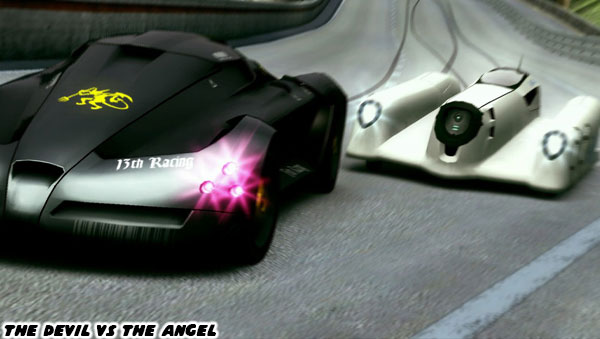
Car fans could tell that the vehicles looked like they came from a particular nation. In the early days the designers at Namco were taking many styling cues from real world production sports cars. The Rivelta cars for example were modeled after the Ferrari and Lamborghini Italian super cars. All of the previous Devil 13 cars had a certain Italian aesthetic to them as well but by Ridge Racer 7 that suddenly changed. The German-influenced design was much more bold and aggressive. By contrast the Japanese auto-manufacturer aesthetics, even for concept cars, focused on seamless integrated technology. In official game art Namco was sure to juxtapose natural and industrial elements to highlight the balance that each car brought into the canon of Ridge Racer.
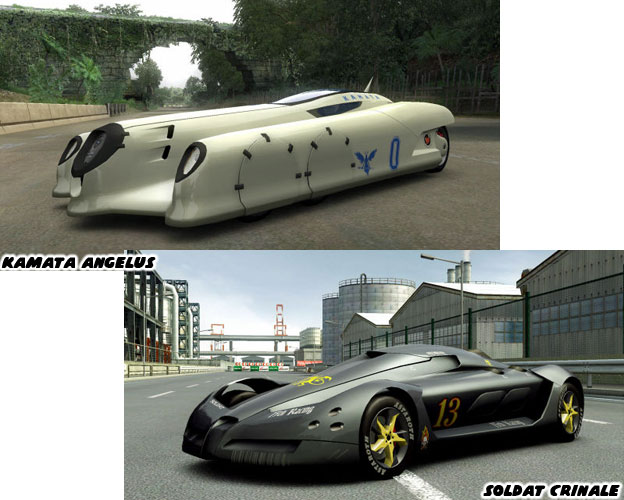
There was tremendous symbolism at play on both cars. The Crinale sported few sponsor stickers but the brand of tires that it sported were from Astaroth. This was a recurring tire manufacturer in the series but the name carried a lot of weight with it. The name Astaroth was derived from the Phonecian Astarte. Also known as the Crowned Prince of Hell. Astaroth had an equivalent to the Babylonian Ishtar, the female goddesses of love. The ancient mythology had been revisited time and time again by Namco. The studio had released an adventure RPG named The Return of Ishtar in 1986. It was the second game in the
Babylonian game series based on the mythology of ancient Babylon. It was the sequel to the Tower of Druaga, a cult favorite from 1984. There was no mistake that the Angel and Devil in Ridge Racer were symbolic of Astaroth and Ishtar. The entire interplay between good and evil, dark and light were universally understood by audiences. The team at Namco was well aware of the legacy before they painted the devil and pitchfork or winged goddess logos onto the hood of the cars.
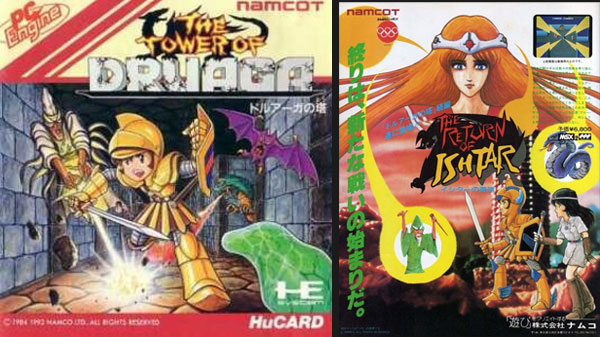
The name Astaroth was also given to a golem in the Soulcalibur series. The large axe-wielding warrior was a force of evil in the game and appeared to be indestructible. He was just one of the otherworldly forces at play in the game. Soulcalibur was a sword fighting game set in ancient times, but not as far back as Druaga's timeline. Soulcalibur was filled with mythical and historical warriors. There was a very thin thread that connected the mythology from the Tower of Druaga to the sword fighters from Soulcalibur. That game, its alliances, good and evil characters and canon were the ancestors to the modern fighters in the Tekken series. That was over 3000 years of history that Namco had sprinkled over their various games, including the sponsor logos featured in Ridge Racer. The mythology of the Namco characters was taken in earnest by the company.
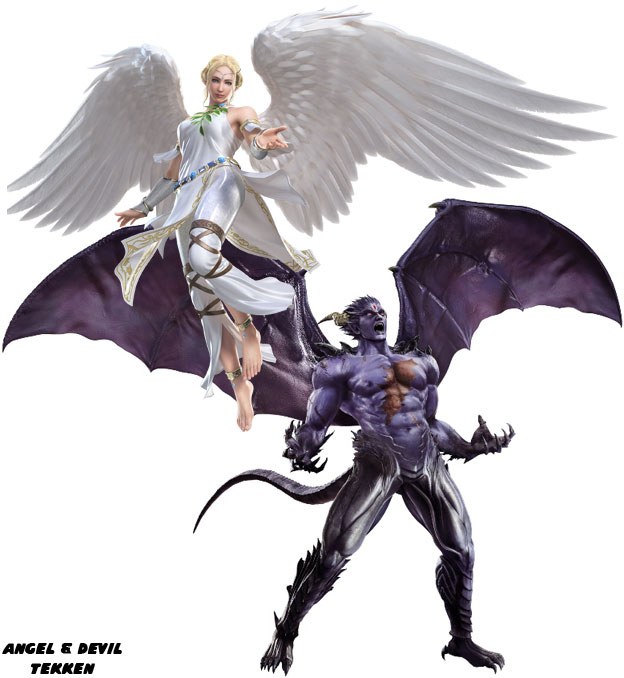
There was an Angel and a Devil personified in the Tekken series as well. In canon humans had been visited and controlled by metaphysical forces several millennium ago. Some of the descendants to these ancient creatures had survived to the modern era. Within very few people were were the genetic traits of these mythical creatures. Kazuya Mishima, a main character from the Tekken series, carried the "Devil Gene" within him. It activated when he became enraged, like the Hulk. Except instead of getting the emotional temperament of a child he became a vicious winged monster. An angel appeared from time to time to try and save the soul of Kazuya from his devil persona. The gene was passed on to his son Jin Kazama.
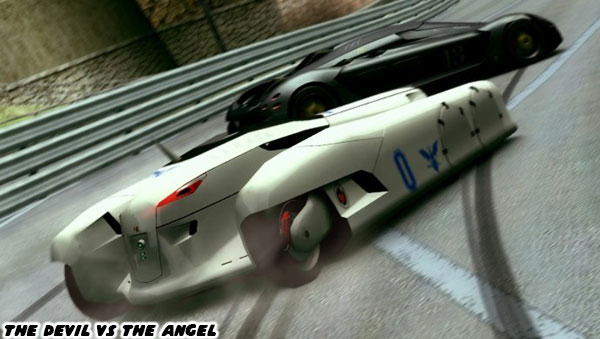
There was an aberration to the gene however. The mother of Jin was a good person. Jun Kazama was an officer for a wildlife conservation group. She was tasked to arrest Kazuya but fell in love with him early on in Tekken continuity. Jun had a very innocent personality, very angelic. As such there was a sort of in-between state that Jin existed in when he mutated. He did not quite become a leathery winged devil, nor did he become a dove winged angel but something else entirely.
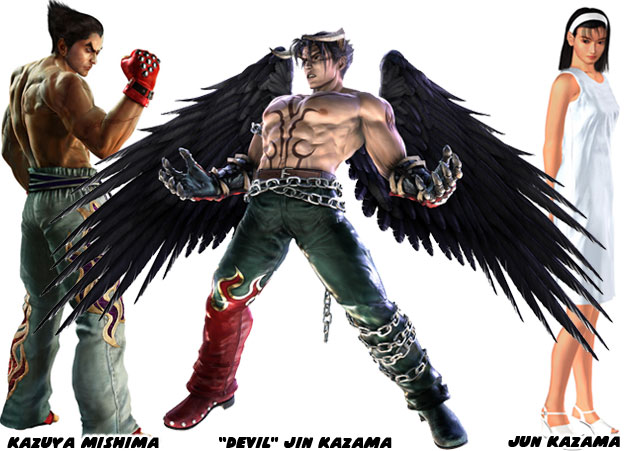
Little by little the rest of the Namco universe had begun to shape the evolution of the Ridge Racer series. It began to make sense as the series continued to grow. The programmers, artists, animators, composers and designers that were pulled together once the original Ridge Racer Team had left the company worked on various puzzle, RPG, fighting game and space shooters. They did not necessarily bring with them an intimate knowledge of car designs, race history or track layout but they did have experience and the willingness to learn. The next blog will look at how they signed their work and changed the direction of the series.
As always if you would like to sponsor me
please visit my Patreon page and consider donating each month, even as little as $1 would help make better blogs and even podcasts!












